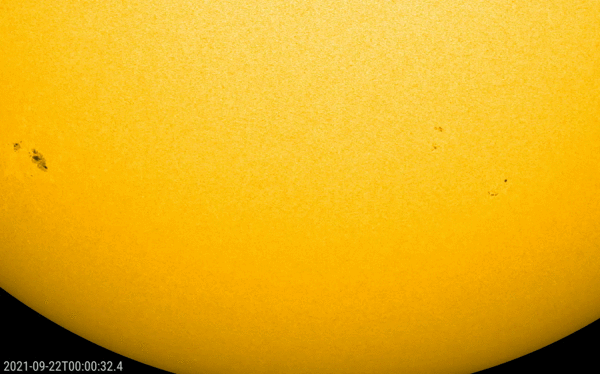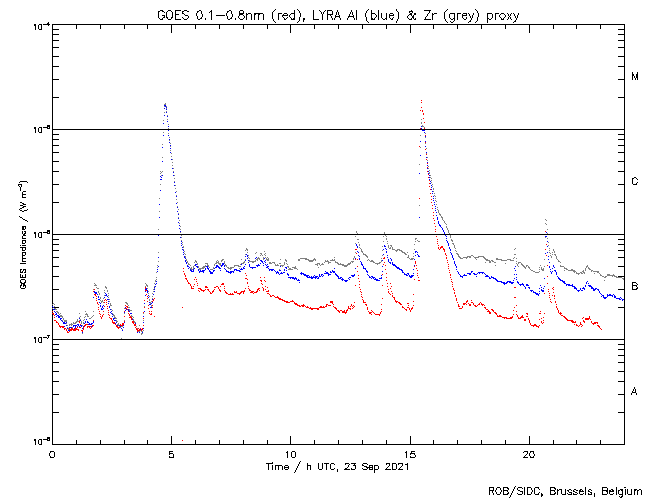NOAA 2871 rounded the Sun's southeast limb late on 17 September. It was the complex remnant of NOAA 2860's main sunspot portion (see this STCE Newsitem) that transited the solar disk from 24 August till 3 September. The SDO/HMI images underneath show NOAA 2871 on its gradually decaying trend, with some magnetic flux emerging (more sunspots) on 24 and 25 September, before fully disintegrating during the subsequent days.

However, NOAA 2871 had no intention to go down quietly, producing at least one C-class flare on almost every day during its transit. Moreover, it produced 2 M-class flares on 23 September: An M2.8 peaking at 04:42UT, and an M1.8 reaching maximum intensity (in soft x-rays) at 15:28UT. The imagery underneath shows the evolution of the x-ray flux as measured by GOES-16, as well as in ultraviolet (UV) as measured by the LYRA instrument on board the PROBA2 spacecraft. These UV data are calibrated to match the x-ray flux as well as possible. Note the first M-class event was missed by GOES-16 as the Sun was fully eclipsed by the Earth from 04:19UT till 05:26UT (i.e. eclipse-season: see NOAA's dedicated GOES eclipse page). Fortunately, GOES-17 and PROBA2 had a clear view on the Sun and were able to record the intensity of the eruption.

The two M-class events can be seen underneath in the SDO/AIA imagery. The screenshots were taken shortly after the time of maximum intensity of each flare. The image on the left is taken with the AIA 193 filter, offering a better view on subtle changes such as coronal dimming and coronal waves, whereas the AIA 131 provides a better view on the flare itself. The associated coronal mass ejections were mostly directed southward, but were thought to possibly have an earth-directed component.







